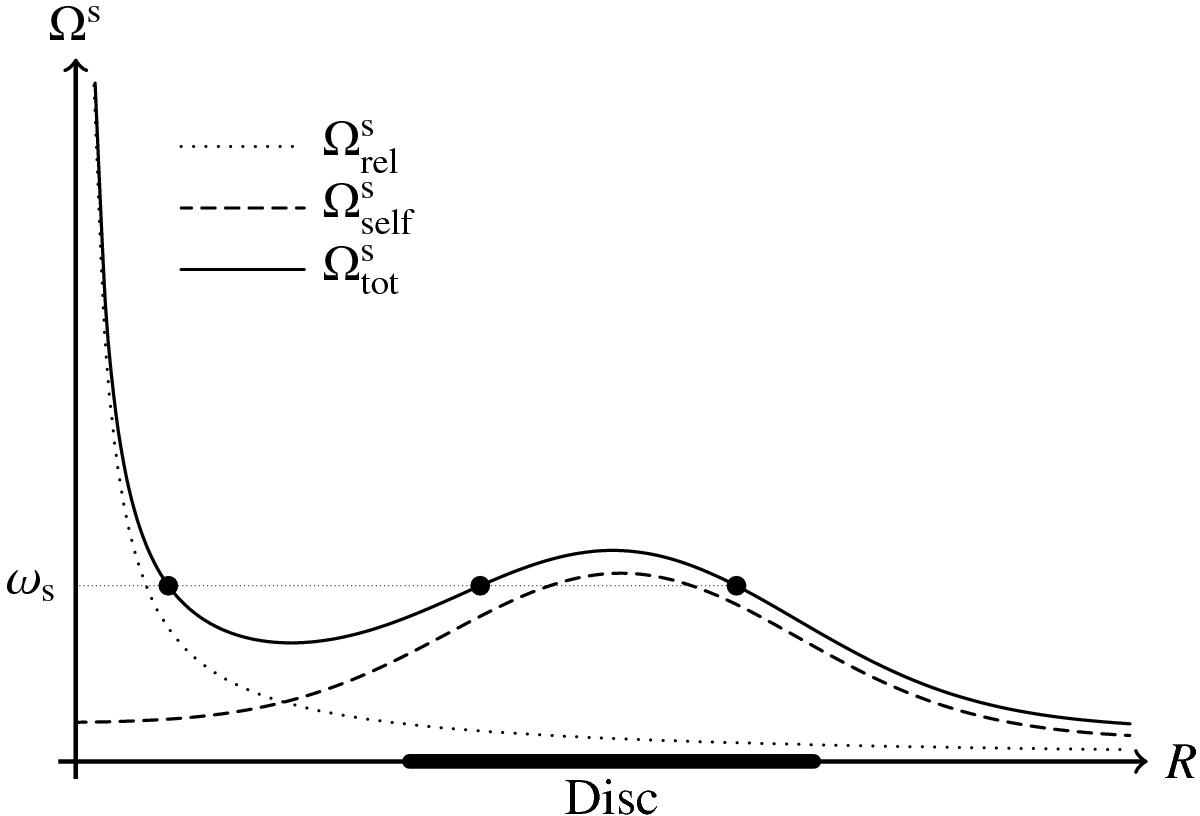Fig. 2

Illustration of the typical dependence of the precession frequencies ![]() and
and ![]() (Eqs. (111)and (112)) as a function of the distance to the central BH. The relativistic precession frequencies,
(Eqs. (111)and (112)) as a function of the distance to the central BH. The relativistic precession frequencies, ![]() diverge as the star gets closer to the central BH, while the self-consistent ones
diverge as the star gets closer to the central BH, while the self-consistent ones ![]() are typically the largest for stars in the neighbourhood of the considered disc. The black dots give all the locations, whose precession frequency is equal to ωs (illustrated by the dotted horizontal line). These positions are in resonance and will therefore have a non-vanishing contribution in the Balescu-Lenard Eq. (92). Because Eq. (92)involves the product of the system’s DF in the two resonating locations, the resonant coupling between the two outer points (which belong to the region where the disc dominates) will be much stronger than the couplings involving the inner point (which does not belong to core of the disc). As stars move inward, their precession frequencies increase up to a point where this prevents any resonant coupling with the disc’s region. This effectively stops the secular diffusion, and induces a diffusion barrier.
are typically the largest for stars in the neighbourhood of the considered disc. The black dots give all the locations, whose precession frequency is equal to ωs (illustrated by the dotted horizontal line). These positions are in resonance and will therefore have a non-vanishing contribution in the Balescu-Lenard Eq. (92). Because Eq. (92)involves the product of the system’s DF in the two resonating locations, the resonant coupling between the two outer points (which belong to the region where the disc dominates) will be much stronger than the couplings involving the inner point (which does not belong to core of the disc). As stars move inward, their precession frequencies increase up to a point where this prevents any resonant coupling with the disc’s region. This effectively stops the secular diffusion, and induces a diffusion barrier.
Current usage metrics show cumulative count of Article Views (full-text article views including HTML views, PDF and ePub downloads, according to the available data) and Abstracts Views on Vision4Press platform.
Data correspond to usage on the plateform after 2015. The current usage metrics is available 48-96 hours after online publication and is updated daily on week days.
Initial download of the metrics may take a while.


